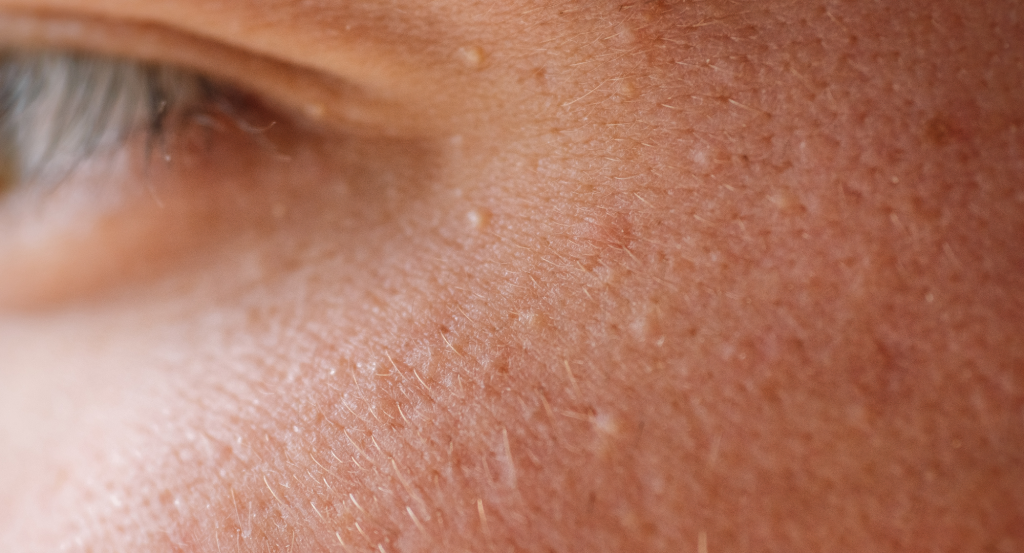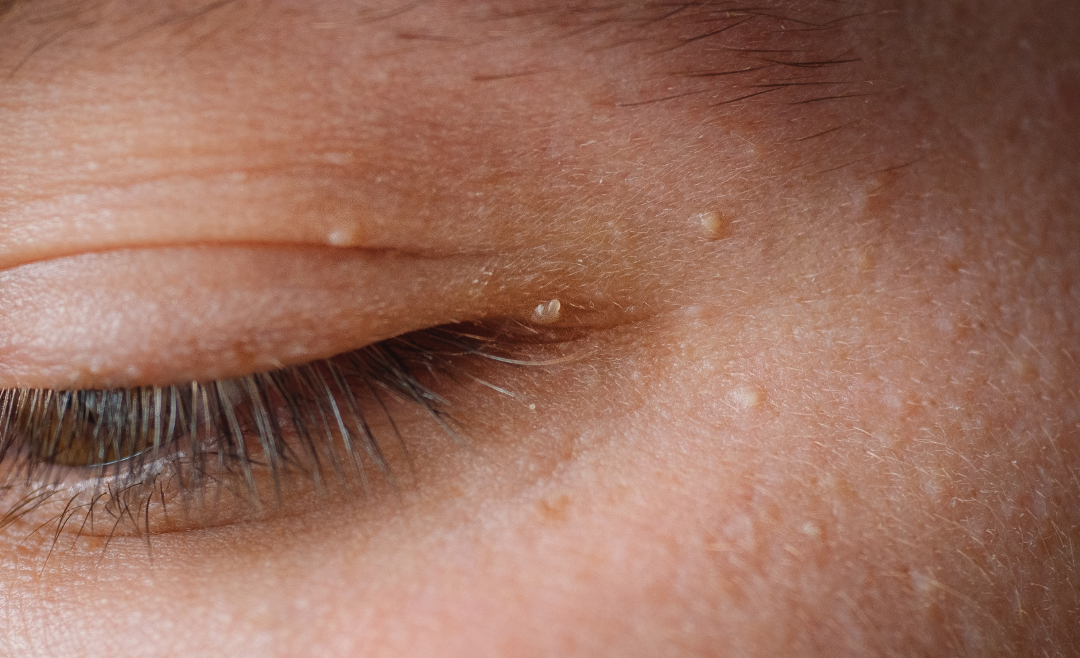Today, we delve into the world of dermatology to explore the enigmatic skin condition called Milia. You might have heard the term before but were left wondering what it actually means. Fear not, as we are here to shed light on what Milia are, what they look like, their potential causes, and, treatment options. Let’s embark on this journey together and gain a deeper understanding of Milia.
What are Milia?
Milia are small, benign, keratin-filled cysts that typically appear as white or yellowish bumps on the surface of the skin. They are commonly seen on the face, especially around the eyes, cheeks, and forehead, but can also occur on other parts of the body. Milia might be confused with whiteheads or pimples, but they differ in their appearance, causes, and treatment.

Characteristics of Milia
Milia are often mistaken for acne due to their appearance, but they have unique characteristics that set them apart:
- Size: Milia are usually small, measuring around 1 to 2 milimeters in diameter.
- Texture: They are firm and dome-shaped, giving them a distinct appearance.
- Colour: Milia can be white, yellowish, or even flesh-coloured, making them blend in with the skin.
- Clustering: While Milia can occur individually, they often form in groups, adding to their puzzle-like appearance.
Causes of Milia
The exact causes of Milia formation are not fully understood. However, several factors have been identified that may contribute to their development:
- Keratin Trapping: Milia form when keratin, a protein found in the skin, becomes trapped beneath the skin’s surface. This trapping can occur due to blocked or damaged sweat glands.
- Skin Trauma: Skin trauma, such as burns, blisters, or even prolonged sun exposure, can trigger the formation of Milia.
- Topical Products: Certain heavy or comedogenic skincare products might clog pores and lead to the development of Milia.
- Genetics: Some individuals may be more prone to developing Milia due to genetic factors.
- Skin Conditions: Milia can be associated with certain skin conditions like bullous pemphigoid, epidermolysis bullosa, and porphyria cutanea tarda.
Treating Milia
Now that we understand what Milia are and what causes them, let’s explore the treatment options
- No Treatment: In many cases, Milia might resolve on their own without any intervention. However, if they persist or cause cosmetic concerns, treatment might be necessary.
- Extraction: Dermatologists or trained skincare professionals can safely extract Milia using a sterile needle or scalpel. However, attempting to extract them at home can lead to infection and scarring, so professional help is recommended.
- Topical Retinoids: Some topical treatments, such as retinoids, might aid in reducing the appearance of Milia by promoting exfoliation and preventing further clogging.
- Cryotherapy: In this procedure, liquid nitrogen is used to freeze and remove Milia.
- Chemical Peels: Mild chemical peels can help exfoliate the skin and potentially aid in Milia removal.
Conclusion
Milia might be a common skin concern, but with a better understanding of their causes and characteristics, you can make informed decisions about treatment options. While Milia often resolve on their own, seeking professional advice and considering innovative treatments like the Plasma Pen can offer effective and aesthetically pleasing results. Remember, skincare is a journey, and embracing cutting-edge techniques can lead to a happier and healthier skin.
Always consult a qualified dermatologist or skincare professional before pursuing any treatments for Milia or other skin conditions. Here’s to glowing skin and a confident you!

